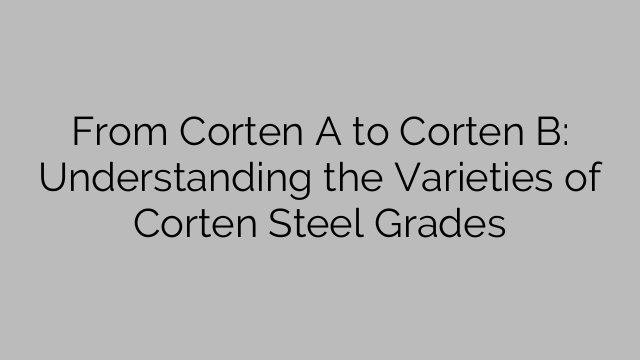There are two main grades of Corten steel that are widely used: Corten A and Corten B. Understanding the characteristics of each grade is essential, as it can help determine the most suitable option for a particular project.
Corten A, also known as ASTM A588 grade A, is the most common type of Corten steel used in outdoor applications. It boasts a higher level of weather resistance compared to other steels, making it ideal for outdoor structures exposed to harsh weather conditions. Corten A contains copper, chromium, nickel, and phosphorus, which contribute to its enhanced resistance to corrosion. This grade forms a protective oxide layer on its surface, preventing further corrosion from occurring and eliminating the need for painting.
Corten B, on the other hand, is less commonly used compared to Corten A. It has similar alloying elements but offers slightly different properties. Corten B is often chosen for applications where high tensile strength is required as it has a higher yield and tensile strength compared to Corten A. This makes it suitable for structural projects such as bridges, buildings, and shipping containers. Corten B also develops a protective patina on its surface, which provides additional corrosion resistance.
While both Corten A and Corten B exhibit admirable weathering properties, it is important to note that they vary in terms of their chemical composition and mechanical properties. The decision to use one grade over the other largely depends on the specific requirements of a project.
When choosing between Corten A and Corten B, it is vital to consider factors such as the location of the structure, the level of exposure to the elements, and the desired aesthetic appearance. Additionally, the choice may be influenced by the project’s budget and time constraints, as Corten B tends to be slightly more expensive than Corten A.
Regardless of the grade chosen, proper maintenance is crucial to ensure the longevity and performance of Corten steel. Regular inspections, cleaning, and the occasional removal of accumulated debris can help maintain its appearance and prevent any potential issues.
In conclusion, Corten steel is a remarkable material with unique properties that make it a popular choice for architectural and construction projects. The two main grades, Corten A and Corten B, offer different qualities and are suited for various applications. By understanding their differences, project managers and designers can make informed decisions when selecting the most appropriate grade for their specific needs.
[ad_2]

